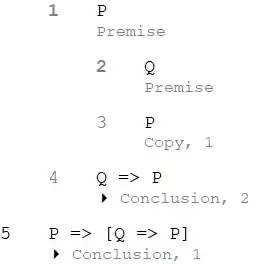Apparently, according to the Conditional Introduction rule, this is valid:
Prove $C \to A$

Source: http://kpaprzycka.wdfiles.com/local--files/logic/W12R Page 5
So before this, the way I viewed the CI rule, was that it allowed us to prove that if we assume the antecedent is true, we can prove the consequent can derived from the antecedent, by referring to the premises which lead to the consequent. If later we find that the antecedent is true, then we can conclude what we already done so before when we just assumed. So basically, sub derivations are inactive at first, but activated if the assumption of said sub derivation is confirmed.
In this example, it's basically stating that the mere assumption of some proposition is enough to state that it applies to some other already proven proposition. It's like you might as well skipped over the sub derivation and said, 'Given $A, C \to A$ because I want it to'.
Personally, I think this is a mistake, though if not, I can't see how you could justify that $C \to A$ given $A$ and assuming $C$ is true alone.
